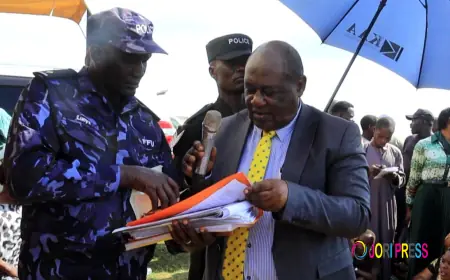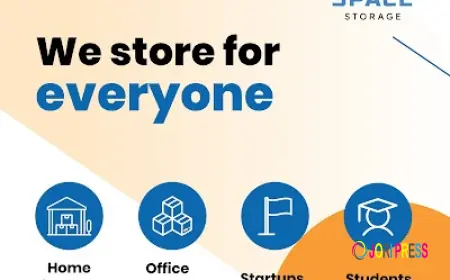Unlocking Africa’s economic potential through development finance


Harnessing institutions to build confidence, capital, and inclusive growth
Kampala, Uganda | Julius Businge | Africa stands at a historic crossroads. For decades, the continent’s growth narrative has been tied to foreign aid and volatile international capital flows, leaving many of its economies vulnerable to global shocks and unsustainable debt cycles.
From Sept.1-2, in Kampala, a bold vision for change took center stage as global thought leaders, policymakers, financiers, and development practitioners gathered for the inaugural Uganda Development Finance Summit, a landmark event aimed at reshaping Africa’s economic future through strategic, homegrown financial solutions.
Held under the theme “Transforming Africa Through National Development Finance Architecture,” the two-day summit convened at a time when traditional aid is diminishing and access to affordable international financing is increasingly constrained. The summit’s core mission was to explore how Africa can mobilize and channel long-term capital to drive self- sustaining, inclusive, and resilient development models, reducing dependency on external actors while unlocking the continent’s immense potential.
Uganda’s President Yoweri Museveni, who presided over the summit’s opening ceremony, emphasized the vital role of national development banks such as the Uganda Development Bank (UDB) in building Africa’s economic independence. Drawing from Uganda’s own experience, Museveni highlighted how private capital, often short-term and expensive, has encouraged an import-driven economy focused on quick returns rather than sustainable wealth creation.
“From the beginning, I could see that relying on the private sector to be the one to bring money, to deal with wealth creation, after you have dealt a bit with infrastructure, was not correct,” Museveni told delegates. “There was a mistake there because our own people did not have the savings, and even when they have money, they squander it. Foreign investment could not easily be attracted compared to, for instance, China. That’s why, from the beginning, I said, we need a UDB. We need a government institution which is not looking for profit, to keep giving some capital, not only for infrastructure, but even for wealth creation.”
He argued that development banks provide the stability and patience needed to fund transformative sectors like agriculture, manufacturing, ICT, and services. “The answer for all this is UDB. This one is a sure guarantee because it is ours,” Museveni added, urging UDB to lower its interest rates to around 10 percent to stimulate private sector growth and accelerate Uganda’s industrialization.
Uganda’s bold commitment
In a clear demonstration of political will, the government of Uganda significantly increased its funding allocation to UDB in the FY 2025/26 national budget, committing Shs1 trillion, a sharp rise compared to Shs55 billion provided in the FY 2024/25 budget. This unprecedented boost reflects recognition of UDB’s critical role in financing priority sectors and fostering long-term growth.
However, development analysts have consistently argued that while this is a positive step, it is not enough to match Uganda’s ambitious development targets. Many have called for even deeper capitalization of UDB to ensure it has the financial muscle to meet the country’s financing needs, particularly in critical areas like industrialization, export promotion, and SME development.
Patricia Ojangole, the managing director of UDB, described the summit as a turning point for Africa. “This is a pivotal moment in our history, one that demands bold reflection, decisive action, and unwavering commitment to reshaping our destiny,” she said.
Citing Aspiration Two of Africa’s Agenda 2063, Ojangole highlighted the goal of raising Africa’s share of global trade from 2% to 12% by 2045. Achieving this vision, she noted, requires robust national development finance systems that integrate public and private sector efforts, foster innovation, and prioritize local leadership.
“National Development Banks and African DFIs must play a stronger role as catalysts, blending local capital with global partnerships to attract investment and scale transformative projects,” she added.
Africa’s untapped potential
Africa’s potential is undeniable. With a young and dynamic population, abundant natural resources, and an emerging innovation ecosystem, the continent is poised for a growth explosion.
According to the African Development Bank, Africa will be the second-fastest-growing region globally in 2025, with projected annual growth of 4.3%, up from 3.7% last year. East Africa, led by economies like Uganda, remains the continent’s most vibrant region.
Yet, this potential remains largely unrealized due to structural challenges in the continent’s finance ecosystem. Africa faces a staggering US $1.3 trillion annual financing gap to achieve the Sustainable Development Goals (SDGs) by 2030. Of this, $68bn to $108 billion is needed annually for infrastructure development alone, according to the 2024 Africa Sustainable Development Report.
This financing gap represents 7% of Africa’s GDP and 34% of its investments as of 2021.
Paradoxically, while Africa struggles with limited development financing, the continent holds an estimated $4 trillion in domestic capital—from pension funds, sovereign wealth funds, and commercial banks—that could be leveraged to transform economies if properly mobilized and directed.
Meanwhile, the urgency for African nations to strengthen domestic financial systems is further heightened by declining international aid. Official Development Assistance (ODA), historically a reliable source of external funding, has come under pressure due to global crises. According to preliminary data by the Organisation for Economic Co-operation and Development (OECD), international aid from official donors fell by 7.1% in real terms in 2024, marking the first drop after five consecutive years of growth.
In Africa, aid assistance declined by 4.1% in 2022, even as global aid reached a record high of $287 billion. Much of this aid was redirected to address refugee and asylum seeker needs in donor countries, leaving African development programs underfunded. This trend underscores the urgency of establishing strong, independent financing mechanisms that are insulated from the unpredictability of external donor priorities.
Delivering a keynote address, Arshad Rab, chief executive officer and chairman of the European Organisation for Sustainable Development, challenged African countries to reimagine their financial ecosystems.
“The underlying issue that will determine the future of this continent and beyond is what kind of development we want. This question must be addressed before we discuss how to finance it and what kind of finance architecture is required,” Rab said.
He warned against copying established capital markets in New York or London, advocating instead for innovative funding mechanisms tailored to African realities.
“The high cost of capital—20 to 30 percent interest rates in many African economies—does not permit an entrepreneurial boom in the formal sector. Without affordable finance, we cannot grow GDP, create good jobs, or balance national budgets,” he emphasized.
UDB’s expanding role
Under Ojangole’s leadership, UDB has increasingly positioned itself as a driver of Uganda’s socio-economic transformation. The bank has prioritized investments in four key sectors identified by President Museveni: commercial agriculture, manufacturing, services, and ICT.
These areas, he argued, represent the most viable pathways to wealth creation and industrial competitiveness.
UDB’s expanded capital injection will enable it to support more long-term, patient financing for projects that generate value and create jobs.
The Summit was not merely a conference but a call to action. Discussions spanned topics such as industrial policy, technological disruption, green growth, and private sector competitiveness.
Delegates explored how Africa’s demographic dividend—its young and rapidly growing population—can be turned into a driver of prosperity rather than a source of unemployment and instability.
Speakers included leaders of Development Finance Institutions (DFIs), venture capital funds, academics, policymakers, and private sector executives. Together, they crafted a vision for a more resilient Africa where finance serves as a catalyst for productivity, inclusion, and sustainable growth.
The gathering also highlighted the risks of failing to act decisively. Without bold reforms, Africa risks remaining trapped in cycles of dependency, commodity price volatility, and fragile growth.
By contrast, robust development finance architecture could unlock unprecedented opportunities for trade, innovation, and industrialization.
Looking ahead
As the Summit concluded on Sept.2, a clear message emerged: Africa’s economic destiny lies in its own hands. With strategic investments, innovative financial models, and strong institutions like UDB, the continent can bridge its financing gap and build a future defined by self-reliance and prosperity.
President Museveni’s vision of an integrated African economy powered by affordable, patient capital reflects a growing consensus among African leaders and financiers.
The challenge now is to translate this vision into action, ensuring that institutions like UDB are adequately funded, effectively managed, and empowered to deliver transformational change.
The Kampala Summit marked the beginning of a new chapter—one where Africa takes ownership of its development trajectory. As Ojangole noted, “This is our moment to act boldly, to lead decisively, and to create a financial architecture that truly serves Africa’s people.”
In the years to come, the success of this movement will be measured not just in balance sheets or GDP figures but in the lived realities of millions of Africans who stand to benefit from a continent finally unlocking its full economic potential.




























































